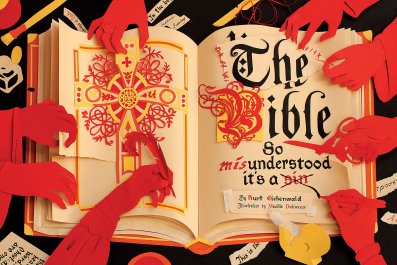Kunal Sarda remembers the first time a foreign language proved a crucial barrier. "I was traveling in France a few years ago, and I found myself caught in the back of a taxi at 2 in the morning without my wallet, trying to explain to the taxi driver what had happened but unable to do so," recalls the 32-year-old entrepreneur. "My partner had a similar story; he was caught in China, really sick, and he could not explain to the pharmacist what medications he needed. He could actually see the medicine over the pharmacist's shoulder."
Those frustrations led Sarda and his partner, Ryan Frankel, to found VerbalizeIt, a company that instantly pairs international travelers with live translators via phone call or video chat. In 2012, a few months after forming, the New York startup gained a national audience when Sarda and Frankel appeared on Shark Tank and secured an investment deal with the show's resident curmudgeon, Kevin O'Leary. (Sarda says that once the cameras stopped rolling on Shark Tank, they chose to decline O'Leary's deal due to terms in the contract they found overly restrictive.)
VerbalizeIt is just one of many new language-interpretation services to recently secure a foothold in the United States's $37 billion translation industry. The company (and other person-to-person services) share the space with automatic translation software (or statistical machine programming); person-to-person is most favored for business users due to its lower margin of error, and because individual interpreters can offer guidance on any conversational idioms and street directions that could prove tricky if misinterpreted. (VerbalizeIt takes this one step further by regularly quizzing its translators on geography.) Automatic apps and programs, with their less fluid but usually coherent results and broader vocabulary, are the most popular option for leisure travelers; Google Translate and iTranslate are the leaders in this field, not least because they are free and include voice-recognition options.
Machine translation is not a new endeavor—Google offered its first translation service, of eight languages to and from English, in 2001. Accuracy was poor and remained so for many years. However, Google Translate has improved dramatically in the past few years and currently supports 80 languages, from Afrikaans to Zulu. This is due to the slow-build nature of statistical databases, which provide the most common translation option for inputted words, explains Google Communications Manager Roya Soleimani.
"We use millions of documents that exist on the Web and translations of those documents. So, for example, the word dog appears hundreds of thousands of times and, in a translation of those same documents, the word is perro [in Spanish]," says Soleimani. "Over time, the translate functionality has improved so much because it's feeding more information into the machine, and it's learning as we go."
Microsoft and Google both announced recently that they're a few years from developing universal, real-time translation software; Microsoft partnered with Skype and demoed an interpretive language software in October that greatly improved the lag time of its Microsoft Translator predecessor. Google is even more advanced in the realm of simultaneous translation, and spurred on the discussion last fall when it acquired the popular app Word Lens. The program, which was called "mind-blowing" by the weblog Lifehacker when it debuted in 2010, allows users to train their smartphone camera on foreign text and see real-time translation via text replacement on their screen. Word Lens is a streamlined advancement on Google's current camera translation feature for Android, which allows users to take a cameraphone photo of text and highlight words for translation. The company is planning to integrate Word Lens and Google Translate next year.
Translation services are now dependable travel tools for many, instead of the sometimes-accurate, sometimes-not Web contrivances they were a decade ago. In large part, this is due simply to the large number of resources committed to making translation work. VerbalizeIt, for example, employs 21,000 interpreters/translators around the world who collectively speak 150 languages, and Google processes over 1 billion translations a day. Such globalization also means new employment nationally; the Bureau of Labor Statistics projected 46 percent job growth for translators and interpreters by 2022.
Soleimani said that the life benefits of such translation services are both immediate and more experiential. "If you're traveling and have a peanut allergy, and for you it's life or death, you can ask your waitress if your dish has peanuts," she said. She added that these new developments also promote "the ability to keep yourself engaged [abroad], to interact with the local community, to get more immersed. It's a very exciting time."



















